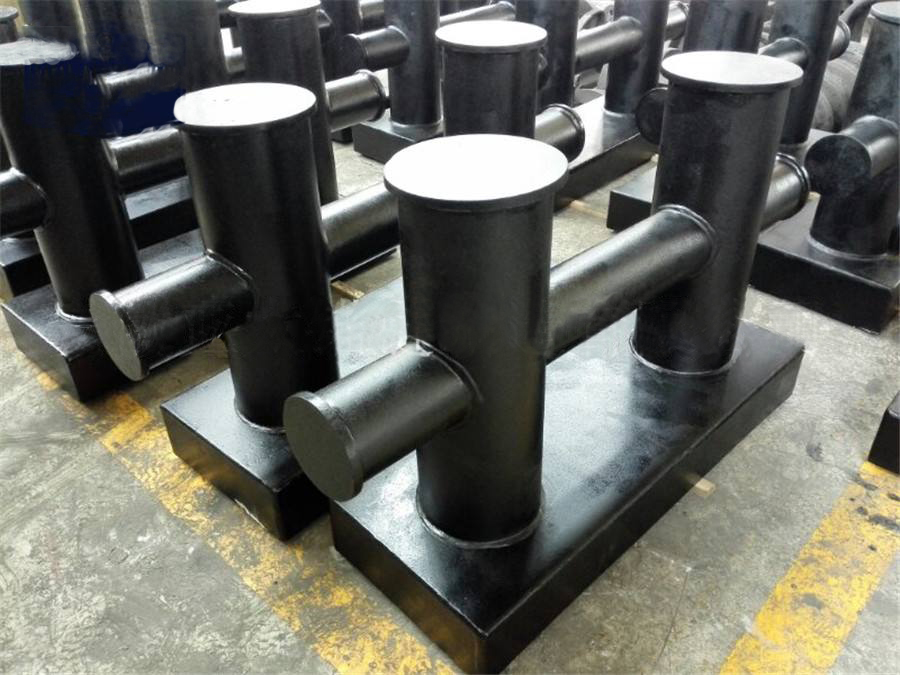Mooring bollards are a vital component of any mooring system. It is the anchor point for mooring lines mounted on the deck to secure the ship or vessel. There are various types of marine bollards, including t-head, t-horn, kidney-shaped bollards, cleat, single-bitt bollards, double-bitt bollards, pillar bollards, tricorn bollards, T-head Japanese and Pillar bollards.

T Bollard
It is also named as“Tee Bollard”, “T-bollard”, or T- head bollard has a top shaped like a “T”. It is very prominent in many regions of the world due to its simplicity and it gets the job done well up to 300 tonnes. T-head bollards along with Horn Bollard or “Staghorn Bollard” can handle higher line load angles than single bitt and kidney shaped bollards.
Kidney-shaped Bollard
Kidney bollard has a simple design that is suitable when low to medium tidal range is expected. Kidney shaped bollards offer an economical solution for installations where securing of mooring lines at high angles is not a concern. This style is not recommended when multiple mooring lines will share one bollard as there may be a possibility of an unintentional release due to the shallow lip at the top of the bollard.
Double bitt Bollard
Double bitt bollard, also known as the “Twin Horn” or “Twin". Small base area is space-saving for small areas. They are useful when high densities of mooring lines are present, this is a better choice for ship mooring and shifting.
Single Bitt Bollard
It is particularly suitable for applications where tidal range variations are large and can handle steep mooring line angles. They are capable of accepting multiple mooring lines and have been designed to fit onto existing bolt patterns for older pillar bollards.
Pillar Bollards
It is normally applicable where tidal ranges are small and use for warping operations along berths where vessels need to be re-positioned for loading purposes. Due to their 360 degree line of load range, they can also be placed on jetties where vessels berth on both sides of the jetty structure. Pillar Bollards can withstand use in harsh environments.
How to choose the mooring bollards
Criterion for selecting mooring bollards are based on mooring pattern, changes in draft due to loading and discharge, wind and current forces, swell, wave and tidal forces, mooring line types, size and angles ice forces (where relevant). Ductile iron, cast steel, and stainless steel are some of the main materials used to make marine bollards. Besides size & design, bollards are also categorized by their grade and mooring capacities.
Furthermore, durability is a factor when choosing a suitable bollard design as maintenance is something that end user should be considered. To spot possible deterioration and to ensure that bollards are working well a continual durability testing and inspection should be done to ensure mechanical performance are maintained.
When looking for a marine mooring bollard supplier, the client must provide vital information about your project to a trusted supplier who understands the required International Standards and regulations, the level of support needed by your port, and all the other details associated with bollard production.
YSmarines mooring bollards are engineered accurately and manufactured in ductile cast iron or steel supplied with high-quality galvanized anchor bolts to offer our clients maximum resistance to berthing impact.


